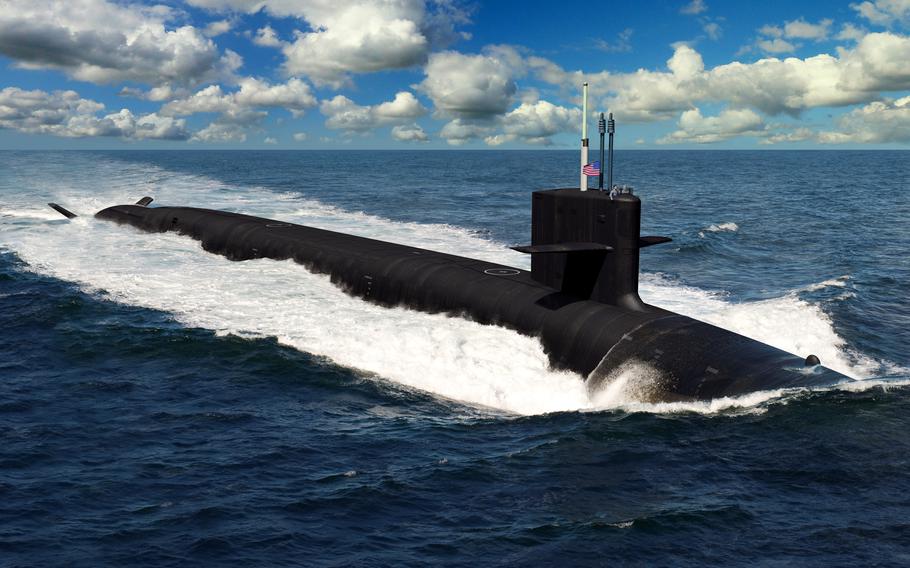
An artist's 2019 rendering of a future Columbia-class ballistic missile submarine. A Government Accountability Office report released Jan. 23, 2023, says the lack of a statistical analysis of the construction schedule for the lead submarine leaves the Navy potentially unable to identify and manage problems that could cause delays. (U.S. Navy)
The Navy doesn’t have the details to determine if the new submarines the United States will depend upon for its nuclear deterrent will be ready on time, a government watchdog agency warned this week.
The lack of a statistical analysis of the construction schedule for the lead Columbia-class nuclear-powered submarine could leave the service vulnerable to production problems and delays, the Government Accountability Office found.
The Columbia program already is facing setbacks because of challenges in design, materials and quality, according to the GAO report, which was published Tuesday.
The GAO says that potential delays in the Columbia-class program also could end up affecting delivery of future attack submarines, which the Navy relies upon for critical intelligence, special operations and missile attack missions.
The Navy wants to build 12 Columbia-class submarines at a cost of about $132 billion. Ballistic missile submarines are considered to be the most survivable leg of the nation’s nuclear triad, which includes intercontinental missiles and bombs deliverable by aircraft.
Construction on USS District of Columbia, the lead ship of the class, started in October 2020. The Navy aims to see it finished within about 6 ½ years, six months earlier than originally planned, according to the GAO report.
The service wants to buy one of the boats each year starting in 2026 and plans to purchase two Virginia-class attack submarines annually through 2033, the report states.
But that plan could be at risk. The submarines in both classes are made by the same two shipbuilders, which have pulled workers from Virginia-class production to meet an aggressive Columbia-class construction timeline, the GAO report points out.
A delay in putting the first submarine into service and the resulting domino effect on construction of future boats could leave a critical national defense gap as the Navy seeks to replace older Ohio-class submarines starting in 2027.
“Without updated long-term planning, the Navy cannot be certain that the fiscal year 2024 budget request will be sufficient to meet the production schedule it has planned for these submarine classes,” the report stated.
The first Columbia-class submarine must be ready for patrol before October 2030, according to the report.
The service’s long-term planning doesn’t account for the shared risks between the programs that likely would result in production challenges and potentially higher costs, the GAO said.
In a letter included with the report, the Defense Department agreed with some of the findings but maintained that its present methodology and systems are sufficient for ensuring that the production schedule is met.
The report makes six recommendations, including completion of a detailed statistical analysis of the construction schedule and an update to the delivery schedule of the lead Columbia-class ship, allowing any potential risks to be lessened.
The GAO also recommends that the Navy update long-term planning to better represent its shipbuilding needs and ensure “that the budget submitted is sufficient to procure submarines on the schedules outlined in the plan.”
“Since the Columbia class program has a critical deterrence mission, challenges to delivering the submarines on time could have far-reaching consequences for the nation’s defense,” the report states.